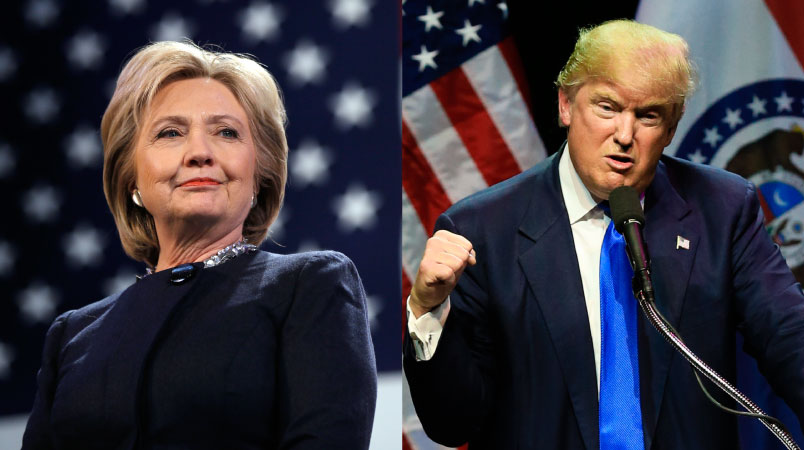As media orgs often do before a major election event, various news organizations have released a veritable storm of new polls this morning. We have five new national polls just this morning along with a number of state polls. This comes after several key polls were released yesterday. As of this moment Hillary Clinton holds a .6 percentage point lead over Donald Trump nationwide. (When I first started writing this post we had four national polls and it was Trump +.1.) Meanwhile The TPM Electoral College stands at Clinton 264, Trump 221. From yesterday that takes into account Colorado moving back into the Toss Up category from lean Clinton.
Beneath these numbers we have a new round of state polls that show the race tightening, even where they haven’t shifted the electoral designation on our scoreboard. At the moment we have three states in the Toss Up category: Colorado (Clinton +1.3) , North Carolina (tie) and Florida (Trump +.4).
(Bear in mind we’re adding new data through the day. So these margins may change. Check the latest on state’s at The TPM Electoral Scoreboard and the national numbers in the PollTracker Average national presidential trend chart.)
Further beneath these numbers we see a persistent trend almost everywhere: Clinton does better in a head to head race than in a multiple candidate race where Johnson and Stein are added. That’s great for Clinton, until you consider that in most but not all states there are four candidates on the ballot. You can look at this in two different ways. Pessimistically her coalition is fragmented, allowing Trump to be competitive or tied with number in the low or mid-40s. That suggests the possibility of a LaPage scenario (after Maine’s governor) where you have a widely reviled buffoon who is elected against a divided opposition. More optimistically, third party numbers tend to decline in the final weeks of the campaign. If that happens, it should drive Clinton’s numbers up relative to Trump.
An additional thing to consider is that in recent cycles the out-party usually drives an advantage from the first debate but generally isn’t able to hold that advantage through election day. In this case, Trump is the out-party. But there are so many wildcards going into this debate, I’d be slightly less confident that history is any guide. It is worth remembering that Mitt Romney moved into a tiny lead after the first presidential debate in 2012 and held that until the last week of October. The PollTracker Average had Obama moving back into a minuscule lead on October 25th. On election day he was .7 percentage points ahead of Romney. In the event, he significantly outperformed that average, beating Romney by a 3.9 percentage point margin.






